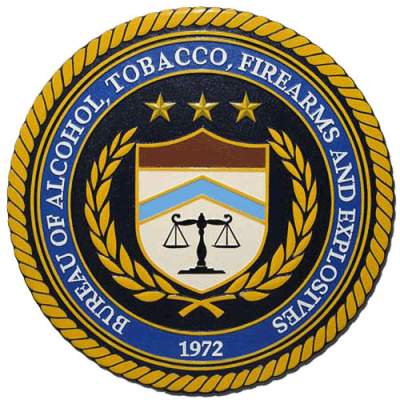
LOS ANGELES — The Bureau of Alcohol, Tobacco, Firearms and Explosives (ATF) wants you to be safe this Fourth of July. Understanding the dangers associated with illegal or improperly used or manufactured fireworks can prevent severe injuries, disfigurement, or even death. These illegal devices are not fireworks.
How can you know the difference? Consumer fireworks, unless restricted by state or local laws, are fireworks which can be sold to the general public. Consumer fireworks cannot contain more than 50 milligrams (ground devices) or 130 milligrams (aerial devices) of flash powder. In addition, the aerial shells cannot exceed 1 ¾ inch. Consumer fireworks generally have colorful packaging and appealing names. Any fireworks that exceed these limits are classified as display fireworks and require anyone importing, manufacturing, dealing in, or otherwise receiving display fireworks have an ATF license or permit.
Legal fireworks are marked with brightly colored and decorated paper and include a trade name and manufacturing information. Illegal explosive devices – commonly referred to as M-80s, quarter sticks, or cherry bombs – often come in plain brown or white wrappers with no identifying marks. Illegal explosive devices meet neither safety nor quality standards and are extremely dangerous even when not being used. These devices can be highly unstable due to heat, shock, or pressure that can trigger accidental detonation.
ATF is the federal law enforcement agency charged with enforcing federal explosives laws and works with federal agencies such as the Consumer Product Safety Commission, along with state and local agencies, through their fireworks enforcement programs to prevent trafficking illegal fireworks, and protect citizens from the dangers of illegal explosive devices.
According to the CPSC, approximately 66 percent of the injuries associated with fireworks occur around the Fourth of July holiday. The majority of the fireworks-related injuries involved firecrackers and sparklers.
The CPSC provides the following safety tips when using fireworks:
- Never allow young children to play with or ignite fireworks.
- Avoid buying fireworks that are packaged in brown paper because this is often a sign that the fireworks were made for professional displays and that they could pose a danger to consumers.
- Always have an adult supervise fireworks activities. Parents don’t realize that young children suffer injuries from sparklers. Sparklers burn at temperatures of about 2,000 degrees – hot enough to melt some metals.
- Never place any part of your body directly over a fireworks device when lighting the fuse. Back up to a safe distance immediately after lighting fireworks.
- Never try to re-light or pick up fireworks that have not ignited fully.
- Never point or throw fireworks at another person.
- Keep a bucket of water or a garden hose handy in case of fire or other mishap.
- Light fireworks one at a time, then move back quickly.
- Never carry fireworks in a pocket or shoot them off in metal or glass containers.
- After fireworks complete their burning, douse the spent device with plenty of water from a bucket or hose before discarding it to prevent a trash fire.
- Make sure fireworks are legal in your area before buying or using them.
Anyone who knows or suspects the manufacture or sale of illegal fireworks or explosives devices should report it to your local law enforcement. Call the ATF hotline toll-free at: 1-888-ATF-BOMB (1-888-283-2662). More information on ATF and its programs can be found at www.atf.gov. Follow ATF LAFD on Twitter @LosAngelesATF.
